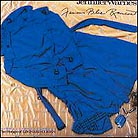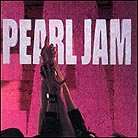 |
|||||||||||||||||
|
The Esotec tweeter was now broken in and had fallen in line. No longer did its output stand out starkly from the rest of the spectrum. And neither did it sound very similar to the LPG I'm familiar with from the IIs. The Esotec, to be sure, is a very different tweeter. |
|||||||||||||||||
 |
I've always enjoyed the fact that the MkIIs achieve a degree of balanced transparency that allows them to be both eminently enjoyable and wonderfully revealing reviewing tools. That's because transparency and detail are not the same thing. Transparency allows one to hear straight through the recording into the music, with as little editorializing as possible. It's not putting the music under a microscope; it's just cleaning the lens for a clearer picture, not necessarily a zoomed-in closeup look. Transparency allows me to enjoy the music without the magnifying glass. It allows me to hear what the upstream components are doing. |
||||||||||||||||
| The Sonata III images very well and accurately. As it should, the window on the performance varies from CD to CD. When the recording allows, they throw a large and airy soundstage. Credit, I suppose, goes to the new 'aerodynamic' shape. In the area of image delineation and focus, they certainly are an improvement over the MkII, which makes them quite good in this regard. Depth too varies from recording to recording as does the location of the front of the stage - if it's on the recording, you'll get it in your room rather than way behind the speakers. |
|||||||||||||||||
An evaluation staple of mine, Jennifer Warnes' Famous Blue Raincoat [Private Music 01005-82092-2] was proficient at highlighting some of the Sonata IIIs' strengths. The bass drum strikes at the onset of "Bird On A Wire" were remarkably realistic, with good balance and weight and absolutely no overhang. We were off to a great start. Percussion, cymbals and high hats were all a little more prominent than I'm used to but also completely free of edge or splash. They sounded true, more there. Warnes' voice was clean, clear, full of body, and nicely suspended from a highly focused spot between the speakers. The saxophone featured on the title cut rang out with notable vibrancy and presence. |
|||||||||||||||||
 |
|||||||||||||||||
|
At times I thought that the IIIs didn't image as large as my IIs. Then I would play a cut like "Joan Of Arc" only to see the opening chimes way off to the right of stage to realize that they do image big but do so in a more natural and focused manner than the IIs. With little or no exaggeration, the IIIs would willingly pitch images out and about - but only when called upon to do so. This is not to be confused with soundstaging, though. The speakers threw a well-illuminated soundstage with reverb rippling back and forth across the replicated hall. |
|||||||||||||||||
|
Jaret Von Erich's lead vocals from Bowling For Soup's Drunk Enough To Dance [Silverstone/Jive 01241-41819-2] were both edgy and familiar and in no way unbecomingly civilized or de-natured. Electric guitars, clean or distorted, had a blistering leading edge and the speakers sounded incredibly spirited. One thing the IIIs did was give excellent insight into the bass drum. They were very adept at demonstrating that the kick drum is not a hard transient followed by an amorphous thud remaining static throughout the decay. Very sophisticated in their portrayal of the complex harmonics of bass drums, the Sonata IIIs illuminated the resonance of that drum's wooden barrel. On certain cuts, I could sense the billowing air pounding back and forth between the fore and aft drum skins. This was excellent bass detail and not at the expense of power or weight. Crank the volume and cue up "Surf Colorado" or "Where To Begin" and see what I mean. Bowling for Soup is all about rhythm, drive and power (with some pretty humorous lyrics mixed in!). The IIIs made for a very satisfying encounter, both loud and amusing. |
|||||||||||||||||
 |
|||||||||||||||||
| Pearl Jam's Ten [Columbia 47857] was equally well served. But of course, it demanded that I crank the volume even farther - it's the law. With the opening kick-drum attacks of "Even Flow", I knew that, like Kawasaki, the good times were going to continue rolling. I could sense the density of the swelling turbulence to be reminded that it's not the drum skin that creates bass, it's the cyclical compression/rarefaction of the pressure waves produced in the air. I was once again knocked out by these detailed visuals produced by the Mk IIIs. And Vedder's voice had gripping intensity, explaining why he inspired a wave of sound-alike vocalists that continues 12 years later. With the music peaking in the mid 90s decibels, my ears gave up before the Sonatas flinched. Even if they started to compress shortly after that, I wouldn't care. As a matter of fact, my neighbor would love it if they did! |
|||||||||||||||||
 |
|||||||||||||||||
By the next evening, I was ready for something completely different. At 11:00 PM, having been inspired by the background music on the CBS television show Without A Trace, I retired to the music room for a late night listening session with the Sonata IIIs and Rimsky-Korsakoff's Scheherazade, OP.35 [LSC-2446]. (Who says TV is a wasteland?) To say that this RCA Victor Living Stereo recording from 1960 has stood the test of time may be my own understatement of the year. It's a wonderful piece. Though late at night and while enjoyed at a very restrained volume, the Sonata IIIs gave me the full measure. |
|||||||||||||||||
 |
|||||||||||||||||
|
I was immediately struck by the deep and cavernous soundstage. After so much Pop and Rock, I had yet to observe just how holographic the Sonata IIIs can get. The portrayal of the violin soloist at the beginning of "The Story of Kalender Prince" was awe-inspiring; so distant on stage, yet so physically present. Dynamically, I felt as though the IIIs immaculately traced the ebb and flow of the music; this despite the fact that ver modestt volumes should have caused the quiet passages to become lost against the mild late night din. The Sonatas remained remarkably clean at whisper volumes. Detailed? You bet - but in an invitingly and musically benign way. Even the excellent Esotec tweeter found nothing to screech at, just warm and smoothly flowing music. I need to get this CD back into the hot stack. Compare Due to the fact that the Silverline Sonata IIIs sounded so different from my reference of the last three years -- the Silverline Sonata MkIIs -- I confess that I was slow to accept their new package of sonic merits. These are two very different speakers united by one common thread - the excellent LPG 2-inch dome midrange and the musical and transparent midrange it spawns. Ultimately though, the Silverline Sonata IIIs did win me over. |
|||||||||||||||||
 |
Bolstering that midrange is some of the best and most sophisticated bass performance I've encountered yet from a Silverline loudspeaker. While they don't quite compete in terms of ultimate extension and probably output, they remind me of the Soliloquy 6.5 - and that's really saying something. I also found that the Silverlines can be used in smaller rooms; midrange and tweeter are better on axis with the seated listener's ears, hence requiring less distance than the 6.5s for proper driver blending. |
||||||||||||||||
 |
|||||||||||||||||
|
I warmed instantly to the sheer aesthetics of these striking speakers - they are truly gorgeous, well-proportioned and beautifully finished. I'm not jaded enough to consider the $6,500/pr Silverline Sonata III loudspeakers cheap. For a guy like me, with two kids in private school and looking at college down the road, that's a lot of bread no matter how you slice it. But when you look around at other speakers in its class, some considerably more expensive, the Sonata III strikes me as pretty good value. In an age where floorstanding two-ways in industrial black finish command premiums and book high recommendations, the Silverline Sonata MkIIIs -- considering their fit & finish; style; top-to-bottom coherence; musical finesse and sheer listenability -- can't fail but generate honest excitement. |
|||||||||||||||||
 |
|||||||||||||||||
 |
|||||||||||||||||
|
Manufacturer's website
|
|||||||||||||||||
 |
|||||||||||||||||